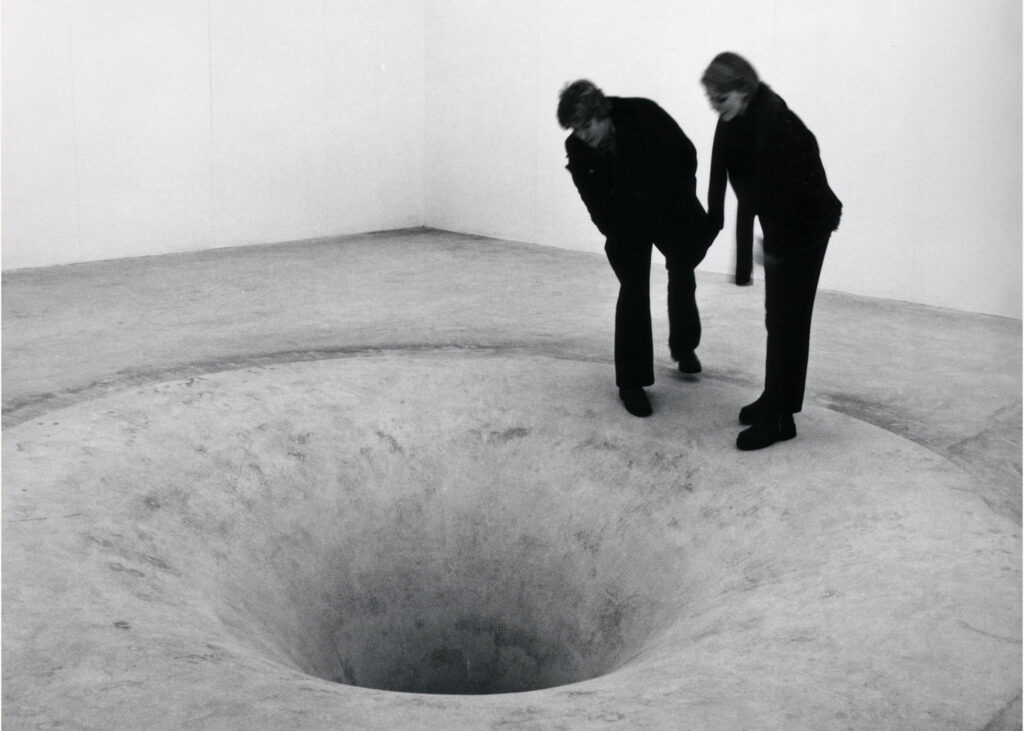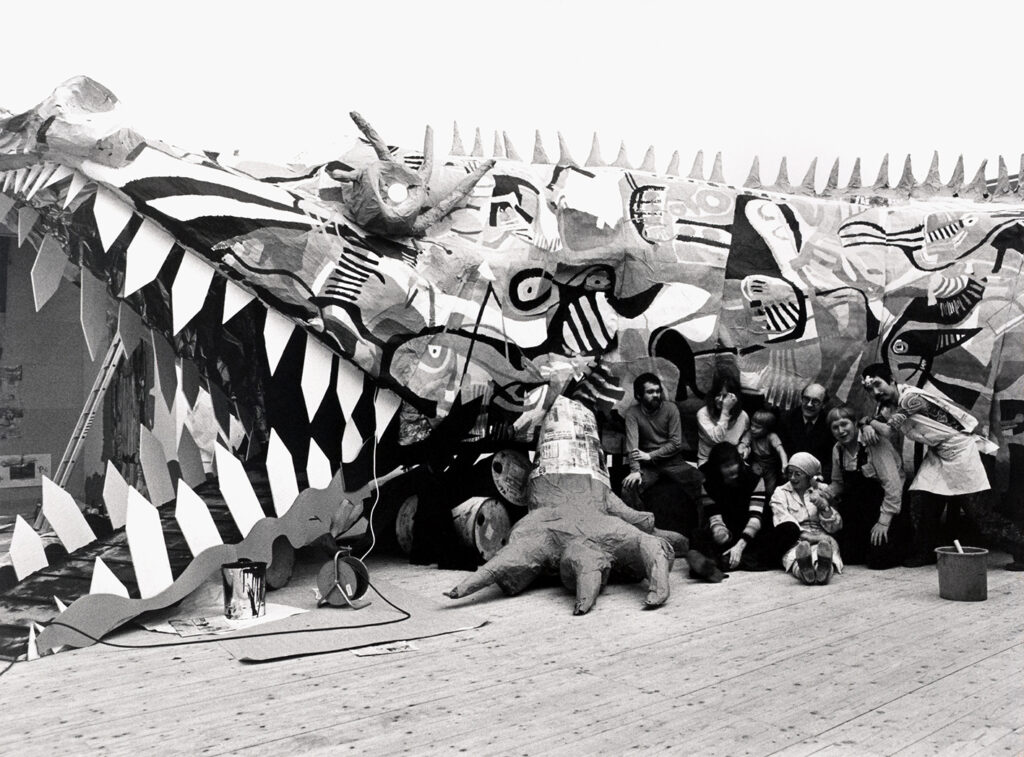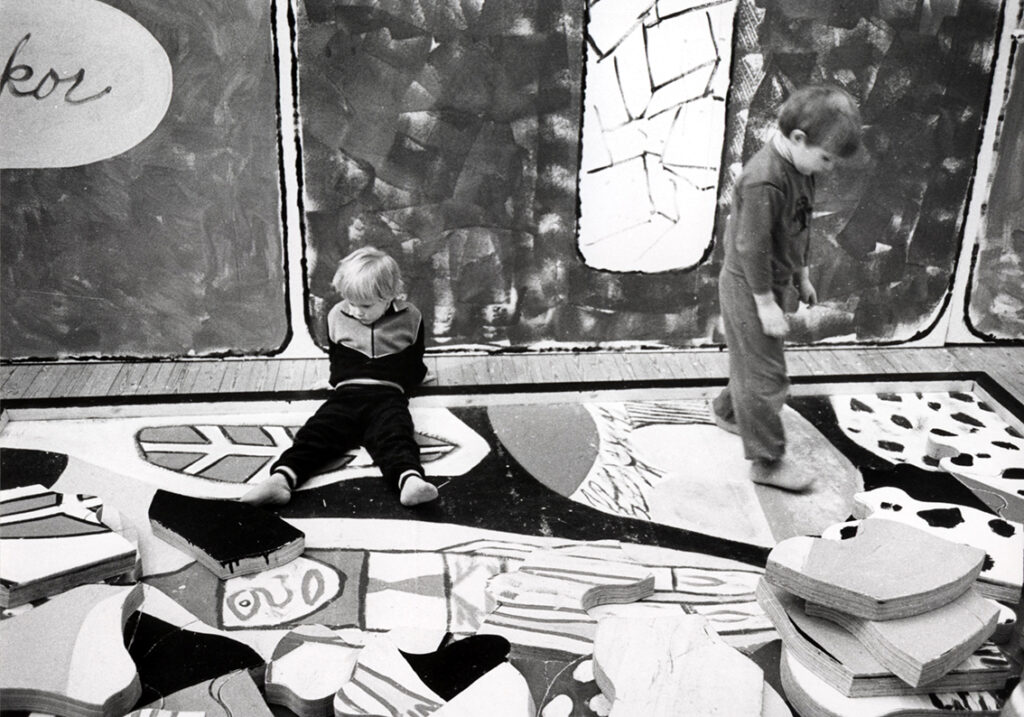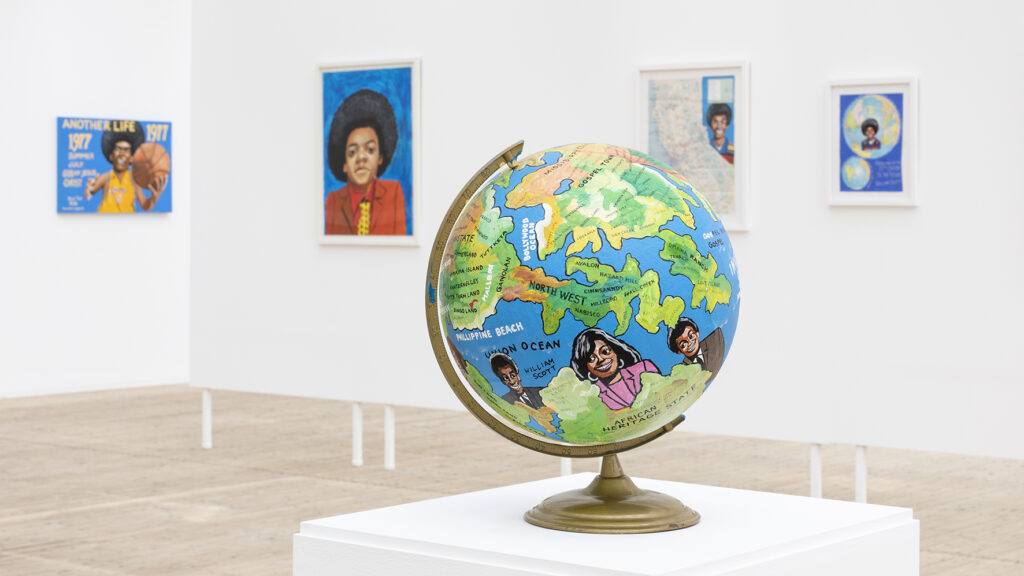
Malmö Konsthall
To visit Malmö Konsthall is to immerse yourself in art. The unique, open floorplan reflects the city’s view that art should be accessible to everyone.
Since its opening in 1975, Malmö Konsthall has presented contemporary art that challenges and inspires. We present three to four exhibitions every year with international and local artists who reflect the world we live in today. The 2,000 square metre exhibition space is a blank canvas that transforms with every new exhibition. In this way it is able to become a unique extension of the art that is displayed.
We believe that art is always part of a bigger conversation. This is something that we aim to work with across all platforms, not only through exhibitions but also in our pioneering educational and events programme where we are able to situate what we do within a larger cultural context. Our work often extends to spaces outside of our premises in Malmö and is driven by genuine, long-term collaboration with communities and organisations.
We prioritise working directly with Malmö and its residents in a variety of ways and aim to balance our work in the city with our regional and international outreach. Malmö Konsthall is part of the Cultural Administration of the City of Malmö. Here you can find out more of what Malmö’s cultural sector has to offer.
Since its opening in 1975, Malmö Konsthall has brought many major international artists to Malmö. Unlike a museum, the Konsthall has no permanent collection. It retains the flexibility to exist as a free space and adapts and responds to each new exhibition and contemporary trends. Our goal is to make the most of the unique potential of Malmö as an international, multicultural city, to remain strongly anchored in the local art scene and to acknowledge the diversity of artistic practices and visitor groups.
Malmö Konsthall is a meeting space for the local art scene and is strongly associated with the cultural life of the city. We want to base our work on the city and its residents and to connect with local organisations that share our goal of making art and culture accessible to all. Malmö Konsthall strives to be an art space for everyone in Malmö, a place where everyone can feel welcome, included and inspired. We want to ensure that the threshold to visit us is kept as low as possible. Malmö Konsthall seeks to engage new visitors by being as open and accessible as possible; there is never an entrance fee for our exhibitions or programmes.
Malmö Konsthall has a flexible, bright exhibition space that can be transformed from one exhibition to the next. It is essentially a white box and the flexibility of the exhibition space has become a highly appreciated feature among the artists who have shown here: almost any spatial idea can be realised within the 2,000 square metres of the Konsthall. Since its opening in 1975, Malmö Konsthall has presented almost 500 exhibitions of varying scope and scale.
Malmö Konsthall collaborates with a variety of cultural practitioners and offers a multidisciplinary programme that includes literature, music, film, performing arts and debate. Working simultaneously on local, regional, national and international levels, the Konsthall strives to widen the definition of art to the fullest extent possible.
The educational programme of Malmö Konsthall, mainly directed at children and young adults, provides hands-on creative experience to thousands of individuals each year. As a way of promoting a general interest in contemporary art and to encourage creativity, we organise workshops, both as part of the regular programming and through outreach activities and school visits. Malmö Konsthall also offers educational activities directed at art practitioners with disabilities. The Konsthall takes active measures to ensure that all residents of Malmö have equal access to art and cultural experiences.
We aim to offer cultural experiences to all residents of Malmö. These activities encompass everything from ensuring that children and young people have access to cultural life and opportunities for their own creativity, to major international art exhibitions, archive matters, extensive museum operations, libraries, and support for independent cultural initiatives. More about the cultural activities in Malmö here (in Swedish).
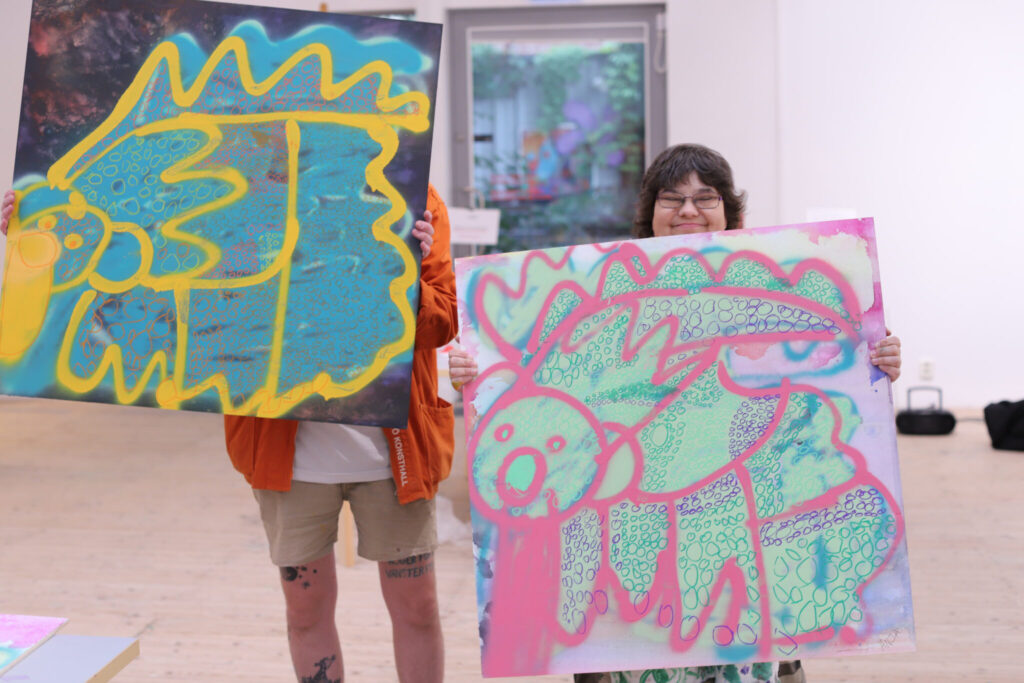
Projects
Malmö Konsthall runs many different educational projects that aim to give participants keys to art and creativity. The educational activities at Malmö Konsthall are mostly directed towards children and youth, but adults, the elderly, people with developmental disabilities and different language groups are also welcomed through targeted workshops and programmes.
Culture for Seniors is a collaboration between the cultural administration and the health, care, and social services administration, where we work to strengthen and coordinate a rich cultural offering of high quality for Malmö’s senior citizens. Malmö Konsthall participates with creative workshops for seniors, films, and discussion materials about art.
Culture can have a preventive, health-promoting, and rehabilitative effect in various ways. The project Culture on Prescription is aimed at individuals with mental health issues, offering creative workshops in a safe environment led by the educators of the Art Hall. The project was initiated by Region Skåne.
Do you enjoy discussing what you have read and seen? In the Short Story Club, we read short stories or other brief texts thematically connected to the current exhibition at Malmö Konsthall, and discuss the texts following a specific model. The Short Story Club is run in collaboration with Lindängen Library.
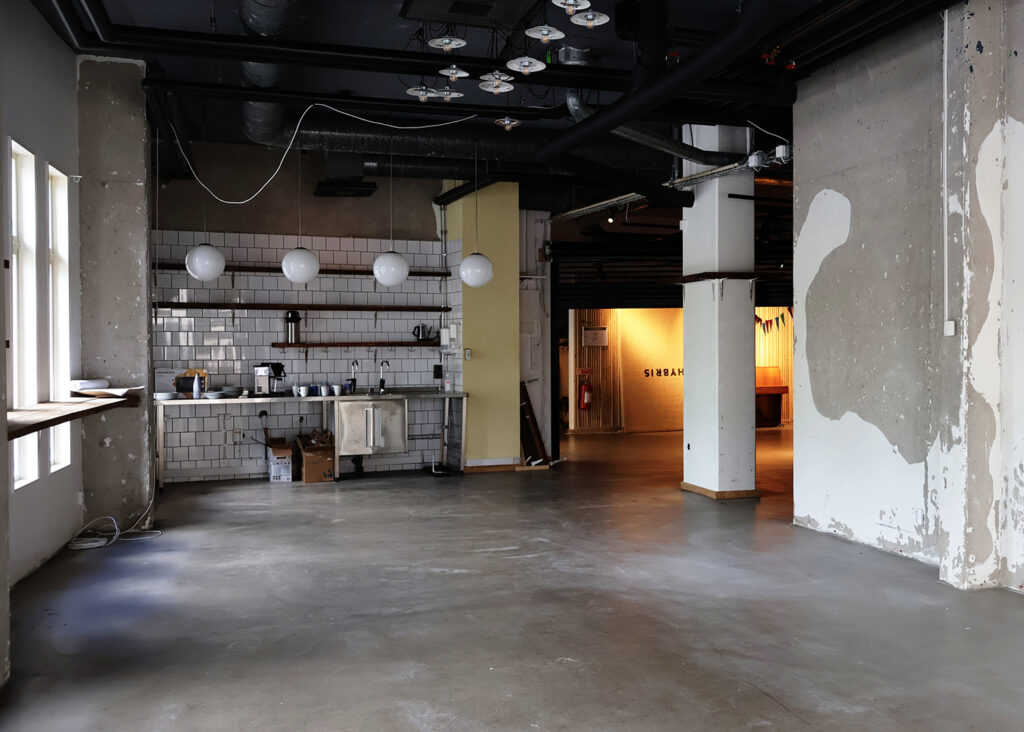
Studio Syd
In spring 2025, Malmö Konsthall will begin work on a professional art studio for artists with non-normative abilities in Skåne. The studio, currently called Studio Syd, will become the first dedicated professional art initiative for artists with non-normative abilities in southern Sweden.
Konstlyftet
Konstlyftet is a project for adults with developmental disabilities driven by Malmö Konsthall in collaboration with daily acitivity centres in Malmö. Konstlyftet aims to offer participants an open space for inspiration and creativity, based on every individual’s personal needs and on their own terms.
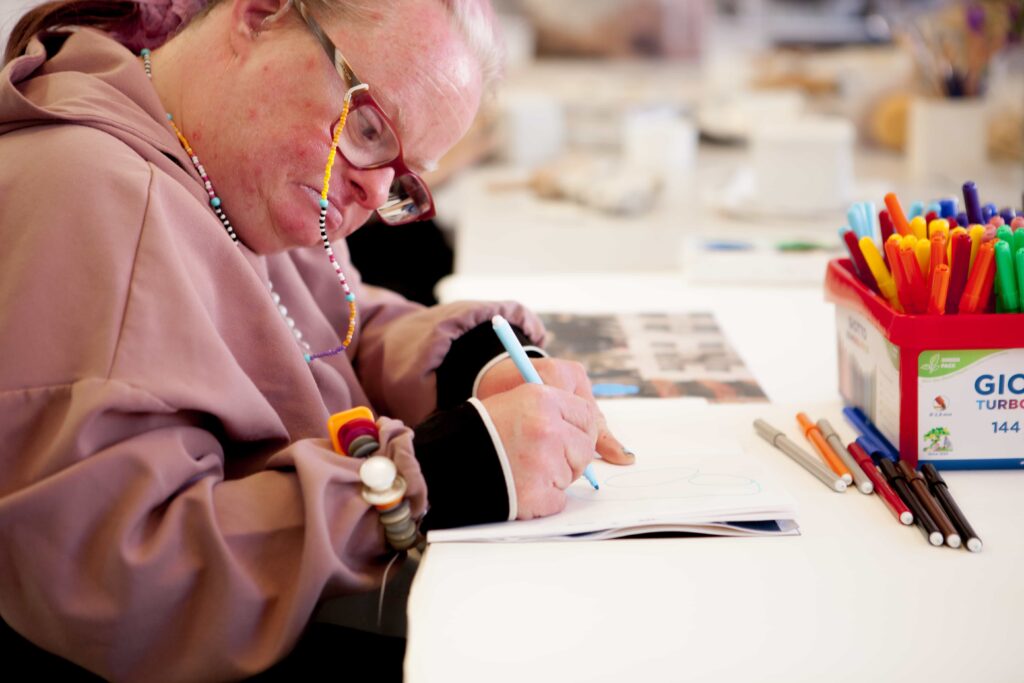
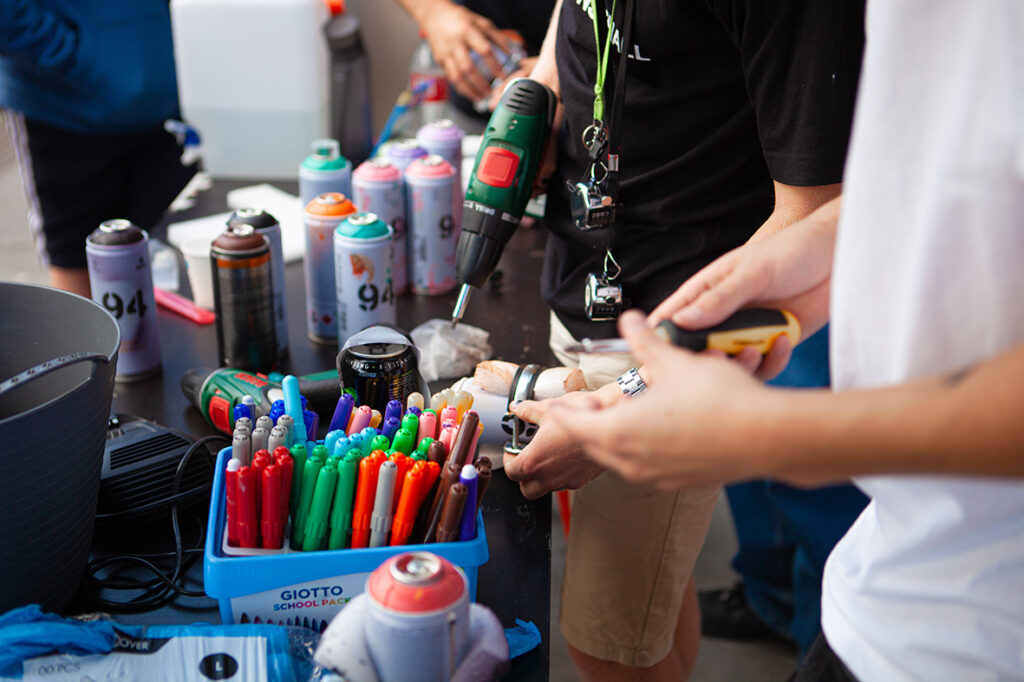
The Young Konsthall Square
The Young Konsthall Square has been organized for three consecutive summers, targeting young people aged 16–19. Participants have taken part in free creative workshops, exploring DJing, graffiti, dance, design, and painting. The project is a collaboration between Malmö Konsthall, Kulturskolan, Arena 305, and KRUT.
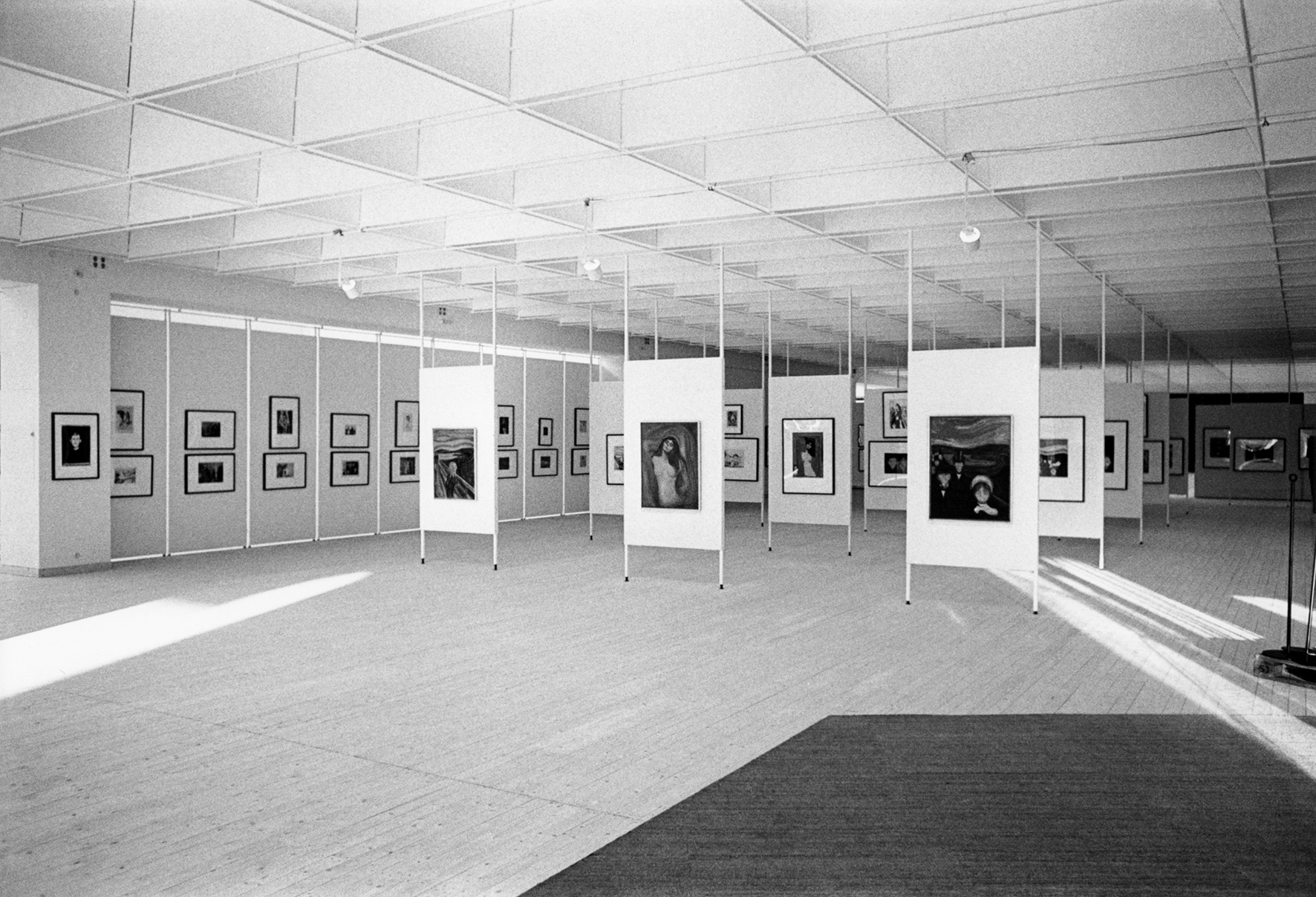
History
The opening of Malmö Konsthall in March 1975 was the culmination of many years of planning. There had been plans of opening a public art gallery in Malmö since the late 19th century, and in 1931, members of Skånes Konstförening established a foundation to further this cause. They organised a raffle, and they intended to use the resulting profits to construct a public art space. These plans, however, were never realised. However, the social climate in the 1960s and early 1970s encouraged local politicians to approve funding for a konsthall, and it was announced that the city would take submissions from architects.
When Malmö Konsthall opened its doors to its very first visitors in March 1975, there were two exhibitions on show: a large solo exhibition of works by Edvard Munch–including the famous “The Scream”, “Anxiety” and “Madonna”, and a group exhibition featuring contemporary artists titled “Ögon-Blickar/New Media 1”. These exhibitions were followed soon after by a Vincent Van Gogh exhibition. As the coming years would demonstrate, an institution of this relatively modest size will always find it challenging to produce such prestigious exhibitions consistently.
Malmö Konsthall has many times been the first to show artists who have later gone on to be hugely influential. Listed among the participating artists in the first exhibition from 1975, “Ögon-Blickar/New Media 1”, were names like John Baldessari, Bernhard and Hilla Becher, Annette Messager, Edward Ruscha and Katharina Sieverding–all of whom have since produced bodies of work that have won increasing international recognition. Malmö Konsthall has always worked with local, regional, and international artists alike, and historically the emphasis and character of the work shown has varied with new each director.
The architect Klas Anshelm won the competition to design Malmö Konsthall. He had established his architecture office in Lund in 1947 and had previously gained attention for the buildings he designed for Lund University and Lund Art Hall, which was inaugurated in 1958.
Regarding Malmö Konsthall, Anshelm said: “I think it’s important to enter directly into an art hall. As soon as you step through the front door, you should be standing among the art. I want it to be possible to hammer nails into the floor and walls without causing any damage.” The flexibility of the exhibition space—essentially just a white box—has been highly appreciated by exhibiting artists over the years: nearly all spatial ideas can be realized. For the 1961 Venice Biennale, Anshelm was one of three architects invited to design the Nordic Pavilion. Although he didn’t get the commission, the idea he had for admitting light through the ceiling stayed with him and was realized at Malmö Konsthall. The 550 skylights still intrigue architecture students who visit the Art Hall.
In 1994, the renovated art hall was inaugurated. Architect Jan Holmgren from White Arkitekter had designed the refurbishment and extension between the exhibition hall and the old Hantverkshuset from 1915. The reception, café, and auditorium were moved out of the hall and placed in what we now call “The Middle Room.” The exhibition space became larger, and the other functions improved. The interior design of the café/restaurant and the bookstore/reception was created by furniture designer Åke Axelsson.
- … the proceeds from the merchandise lottery organized by the Malmö Konsthall Foundation in 1931 have led to the foundation awarding an annual stipend to a currently active artist with ties to Malmö since 1997.
- … the greenery on Malmö Konsthall’s concrete wall along Munkgatan is wild ivy.
- … the floor inside Malmö Konsthall’s exhibition hall is made of two-inch rough-sawn pine (almost 5 cm).
- … White Arkitekter, in addition to Malmö Konsthall’s Middle Room, is also behind the large piazza (Konsthallstorget and St Johannesplan) located in front of Malmö Konsthall since 2014, between St Johannes Church and Pildammsvägen.
- … Åke Axelsson has also created environments and designed furniture for places such as the Royal Armoury, the restaurant at the Moderna Museet, the Swedish Parliament Library in Stockholm, the Maritime Museum in Karlskrona, and the Värmland Museum in Karlstad.
- … Malmö Konsthall is not involved in the acquisition and placement of the large three-part sculpture by Tony Cragg, which was inaugurated in 2017 at Konsthallstorget. However, in 2001, Malmö Konsthall held a major retrospective exhibition with the artist.
- … Hantverkshuset, which has an entrance directly into the Art Hall’s café & restaurant, houses an auditorium, a children’s workshop, a framing workshop, and the office. In the early 20th century, it was a so-called “widow’s house” for the wives of craftsmen who had passed away and who, without their own income, had the opportunity to receive a small apartment. One such apartment was located in the inner room of Malmö Konsthall’s bookstore, with a kitchen window facing what is now the reception desk.
Mats Stjernstedt 2016–
Diana Baldon 2014–2016
Jacob Fabicius 2008–2013
Lars Grambye 2003–2007
Bera Nordal 1997–2002
Sune Nordgren 1990–1996
Björn Springfeldt 1986–1989
Eje Högestätt 1975–1986
To our exhibition archive
